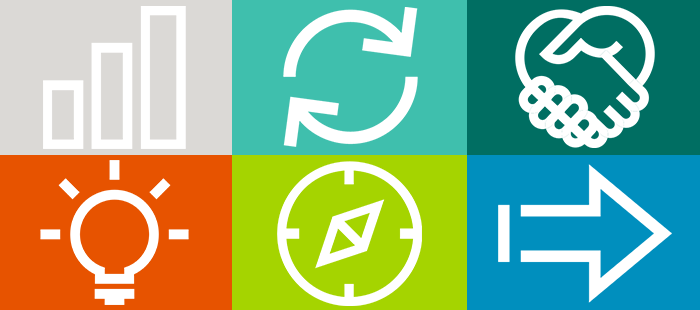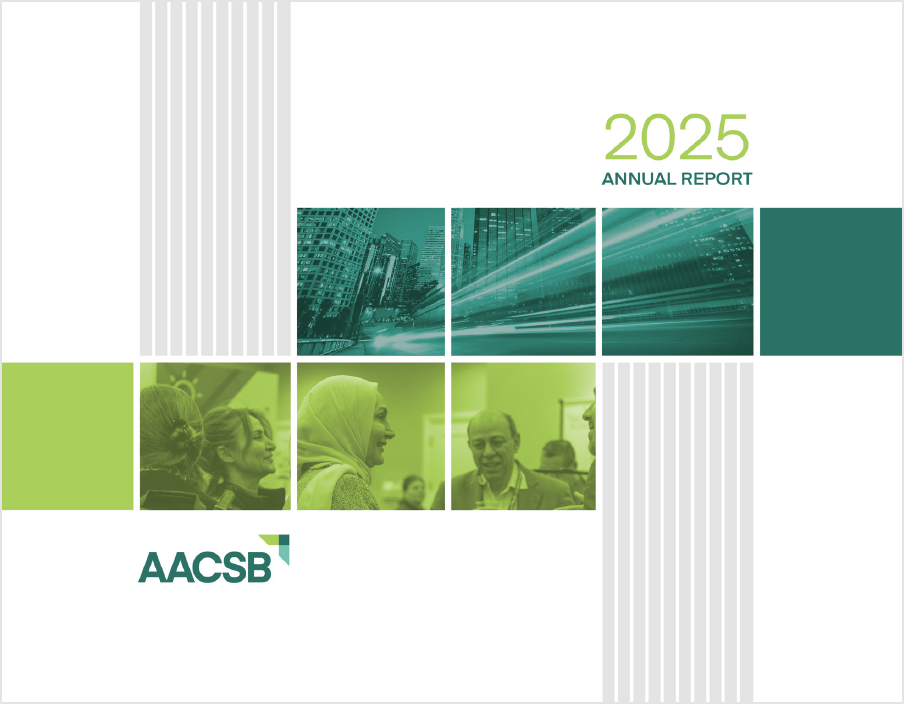How AI Can Improve Employee Well-Being
- AI-driven scheduling systems allow employers to create fair staffing processes, while AI-enabled tools take over repetitive job functions to free employees for more creative work.
- Wearable devices monitor employees’ levels of stress, and buildings outfitted with smart technology adjust environmental factors to make workers more comfortable.
- But ethical considerations arise because AI systems collect and analyze workers’ personal data. Employers must maintain a balance between efficiency and privacy.
In the bustling corridors of hospitals and the fast-paced environment of hotels and restaurants, the quality of service delivered often depends on one crucial factor: the well-being of the worker behind the smile.
Service industries such as hospitality and healthcare are built on human interaction in which production and consumption are happening simultaneously. The emotional cost of these interactions is increasingly becoming a focus for researchers. Job satisfaction among hospitality workers, for example, has been shown to directly enhance customer perceptions of service quality. On the flip side, emotional exhaustion undermines both staff morale and the client experience.
In workplaces where stress is significant, cultivating employees’ well-being should be a priority for companies. It’s not just individual workers who suffer. When employee well-being falters, the entire team feels the impact—and by extension, so does the customer.
One part of the solution could be integrating artificial intelligence (AI) tools that enhance productivity and employee well-being by optimizing schedules, monitoring health, automating tasks, personalizing training, and adapting work environments. In addition, AI-driven platforms might help organizations implement and monitor well-being initiatives at scale, offering personalized interventions and predictive insights.
Yet, despite the potential of AI, there is still no comprehensive framework that tests its impact on well-being across both individual and organizational levels. Therefore, it’s crucial to test these technologies in the future in order to see their validity.
Below we explore five key areas where AI is making a significant impact.
1. Time and Productivity Management
Efficient scheduling is crucial in high-pressure industries such as healthcare and hospitality. AI can revolutionize this aspect by creating fair and flexible schedules that support work-life balance.
For instance, Ochsner Health implemented an AI-based scheduling system for anesthesiologists. Six months later, the department saw an increase in the number of vacation days taken, a reduction in the number of vacation requests that weren’t granted, and an uptick in engagement scores (from 3.3 to 4.2 on a 5-point scale). The AI system also reduced the time the department needed to generate schedules from 60 to 75 hours every month to just 14 hours. This allowed the company to institute more personalized and efficient staffing.
AI can revolutionize well-being in high-pressure industries by creating fair and flexible schedules that support work-life balance.
In the U.K., the National Health Service (NHS) is exploring AI-driven dynamic scheduling to address backlogs in planned surgeries. A pilot program at University Hospitals Bristol and Weston NHS Foundation Trust demonstrated success by identifying local patients who could fill canceled surgery slots on short notice, leading to cost savings for hospitals and reduced waiting times for patients.
2. Health Monitoring in the Workplace
AI-integrated wearable devices are playing a pivotal role in monitoring employee health and promoting well-being. Software company Thrive encourages employees to track health metrics through the Whoop bracelet, while insurance company YuLife maintains a website where employees can gamify their participation in mental and physical well-being exercises. These initiatives aim to reduce sick days and lower insurance costs by offering employees incentives for achieving exercise or sleep goals.
Another tool for monitoring workers’ health is Virtuosis AI. It analyzes voice and speech patterns during virtual meetings and calls to detect signs of stress, fatigue, and emotional strain. Using advanced algorithms and natural language processing, it can assess vocal biomarkers associated with mental and emotional well-being, providing real-time feedback and trends over time.
The tool enables organizations to proactively identify individuals who may be at risk of burnout or declining health, allowing companies to provide timely support through wellness programs or adjustments in workload. The system prioritizes privacy and anonymized data, ensuring insights are used ethically to promote a healthier and more supportive work environment.
3. Automation of Repetitive Tasks
Repetitive administrative tasks can lead to employee burnout and decreased job satisfaction. AI-powered automation tools are alleviating this burden by handling routine processes, allowing employees to focus on more meaningful work.
For example, in the healthcare industry, AI assists in automating routine tasks such as entering patient data and monitoring vital signs. This reduces the cognitive load on healthcare professionals, enabling them to dedicate more time to patient care.
4. Adaptation of Work Environments
Employers are utilizing AI to adapt work environments in real time, enhancing employee comfort and productivity. By analyzing data on lighting, temperature, and noise levels, AI systems can adjust environmental factors to suit individual preferences and tasks.
AI can enhance employee comfort and productivity by adjusting environmental factors to suit individual preferences and tasks.
Deloitte’s headquarters at The Edge, a building in Amsterdam, is often cited as one of the smartest and most sustainable office buildings in the world. It uses AI and Internet of Things technologies to optimize lighting, temperature, and energy use based on occupancy and employee preferences. Through a connected smartphone app, employees can personalize workspace settings to control light and climate.
The building collects data via thousands of sensors, allowing real-time adjustments to improve comfort and energy efficiency. These adjustments contribute to improved concentration, reduced fatigue, and overall better employee well-being.
5. Personalized Training and Skill Development
AI-driven learning platforms are transforming employee training by providing personalized development plans that address individual skill gaps. This approach enhances employees’ job satisfaction and supports their career growth.
Several companies have implemented AI analytics platforms to monitor and customize training. For example, IBM’s AI-driven coaching platform offers personalized development plans, leading to a 25 percent higher job satisfaction score among teams utilizing AI tools.
Ethical Considerations
Although technological innovation in the workplace is accelerating, there is still a notable lack of empirical research on how specific interventions can effectively support employee well-being. Emerging tools present promising opportunities to enhance mental health and job satisfaction, yet their practical application remains underexplored.
Business school researchers should address this gap by investigating how AI and other technologies can be leveraged to promote employee well-being, especially in industries such as healthcare or hospitality that are currently experiencing significant labor shortages. It’s particularly important for scholars to consider the evolving nature of work and the ethical frameworks that should govern the use of AI in people-centered professions.
Ethical considerations around AI in the workplace include concerns about privacy, algorithmic bias, and job displacement.
One of the foremost ethical issues associated with implementing AI in the workplace involves privacy and data protection. Since AI systems often rely on the collection and analysis of employees’ personal data, one significant challenge is maintaining a balance between monitoring workers effectively and safeguarding their individual privacy.
Another key concern relates to algorithmic bias. AI tools that assess well-being or performance might produce unfair outcomes if they have been trained on data sets that are biased against certain ages, genders, or cultural backgrounds. This could potentially exacerbate inequality in the workplace.
In the context of task automation, ethical questions also arise around job displacement. The increasing ability of AI to take over routine or repetitive tasks could result in workforce reductions. This shift places a responsibility on organizations to support affected employees through retraining and upskilling initiatives, ensuring they remain relevant in a transforming labor market.
It’s equally important for employers to make efforts to preserve human agency. While AI has the potential to enhance efficiency and decision-making, it should be used to support, not replace, human judgment. Overreliance on automated systems could erode employees’ autonomy, diminishing their sense of empowerment and satisfaction at work.
To address these concerns, organizations must adopt AI ethically and responsibly, guided by principles of fairness, transparency, and respect for individual rights. Ethical AI deployment should be part of a broader commitment to creating inclusive, supportive, and human-centered workplace environments. As industries built on human touch continue to face the pressures of modern demands, one thing is clear: Taking care of the workers behind the service is no longer optional. It’s essential.
Note: Some sections of this document have been rewritten with the assistance of generative AI to enhance clarity and readability.






